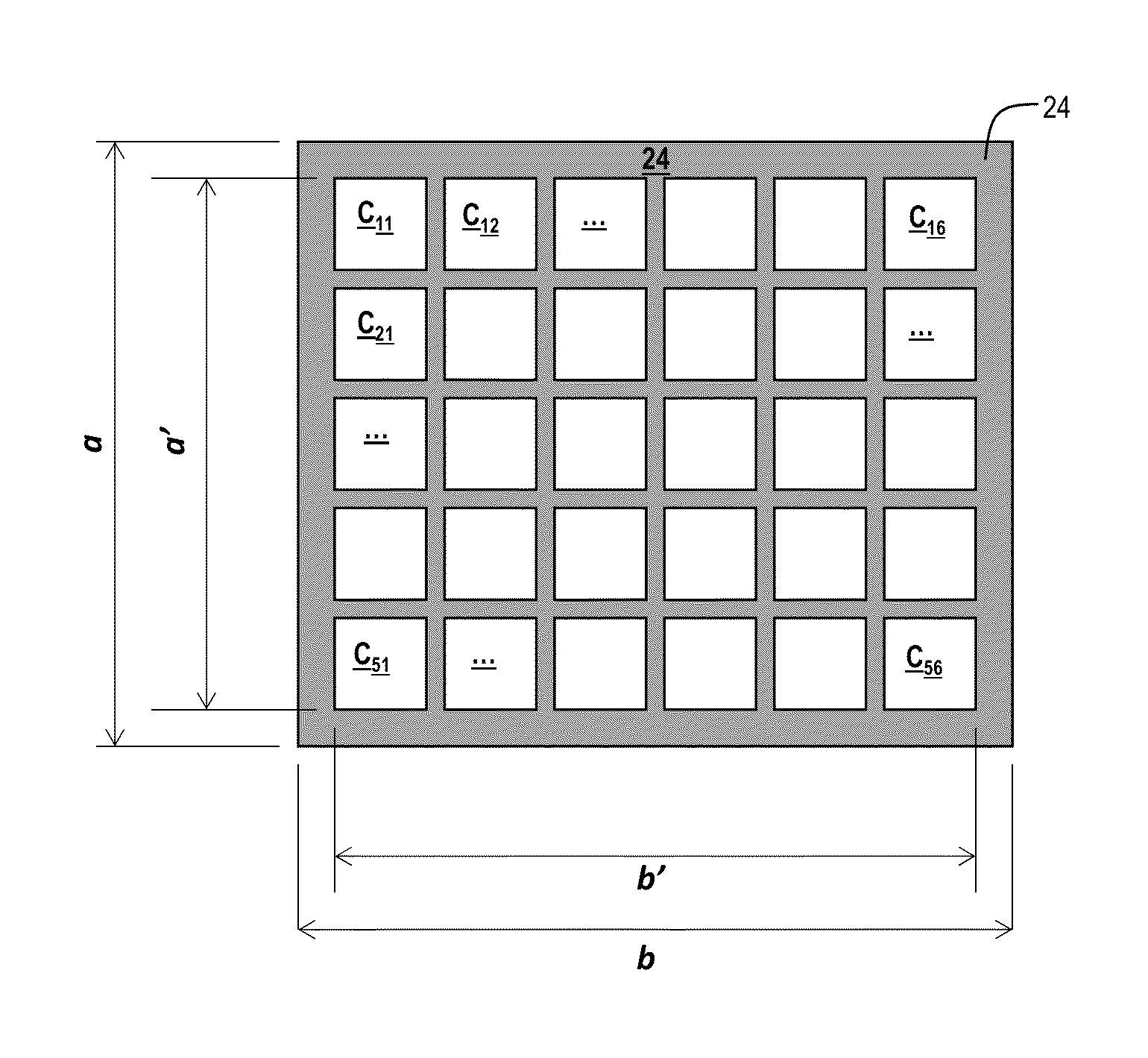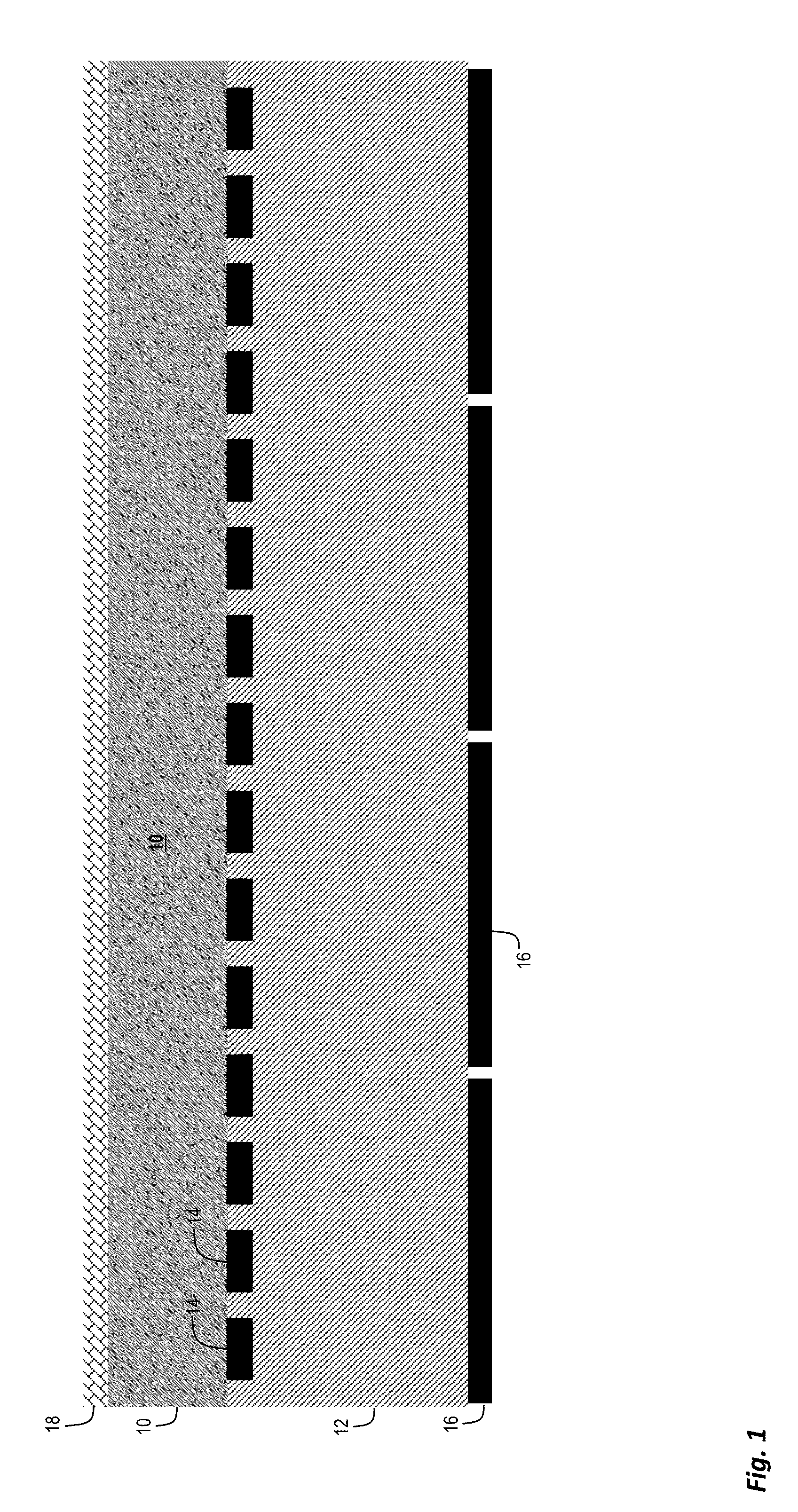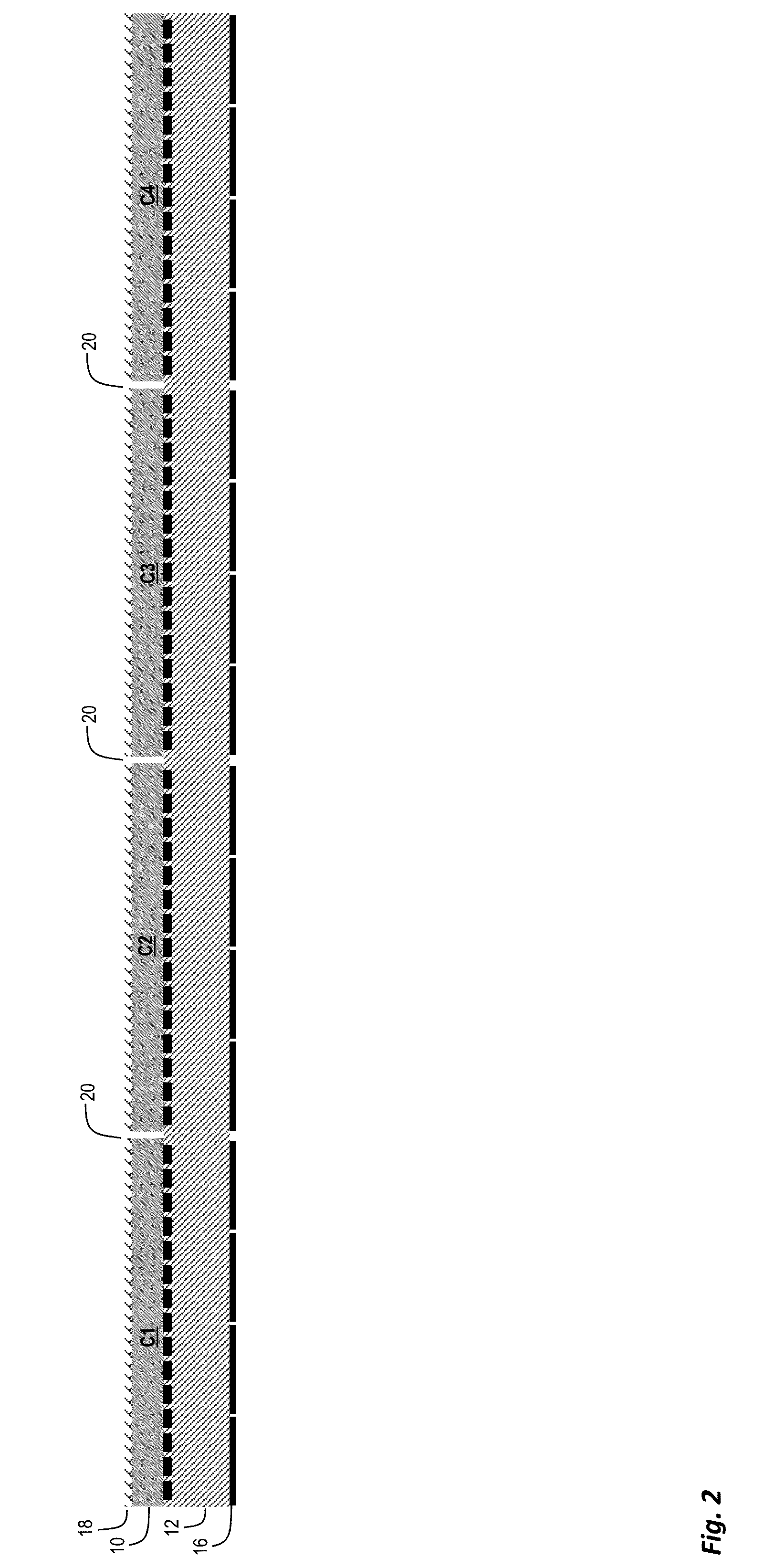Photovoltaic monolithic solar module connection and fabrication methods
a solar module and monolithic technology, applied in the field of photovoltaic (pv) solar cells, can solve the problems of power loss and reliability degradation, performance degradation, photovoltaic modules, etc., and achieve the effects of reducing disadvantages and deficiencies, reducing fabrication complexity, and increasing solar cell array performan
- Summary
- Abstract
- Description
- Claims
- Application Information
AI Technical Summary
Benefits of technology
Problems solved by technology
Method used
Image
Examples
Embodiment Construction
[0030]The following description is not to be taken in a limiting sense, but is made for the purpose of describing the general principles of the present disclosure. The scope of the present disclosure should be determined with reference to the claims. Exemplary embodiments of the present disclosure are illustrated in the drawings, like numbers being used to refer to like and corresponding parts of the various drawings. The dimensions of drawings provided are not shown to scale.
[0031]And although the present disclosure is described with reference to specific embodiments and components, such as a back contact back junction solar cell, one skilled in the art could apply the principles discussed herein to other solar cell structures (such as front contact or emitter wrap through—EWT-solar cells), fabrication processes (such as various metallization methods and materials, for example plating), as well as continuous backplane materials and formation, for example a dielectric material depos...
PUM
 Login to View More
Login to View More Abstract
Description
Claims
Application Information
 Login to View More
Login to View More - R&D
- Intellectual Property
- Life Sciences
- Materials
- Tech Scout
- Unparalleled Data Quality
- Higher Quality Content
- 60% Fewer Hallucinations
Browse by: Latest US Patents, China's latest patents, Technical Efficacy Thesaurus, Application Domain, Technology Topic, Popular Technical Reports.
© 2025 PatSnap. All rights reserved.Legal|Privacy policy|Modern Slavery Act Transparency Statement|Sitemap|About US| Contact US: help@patsnap.com



